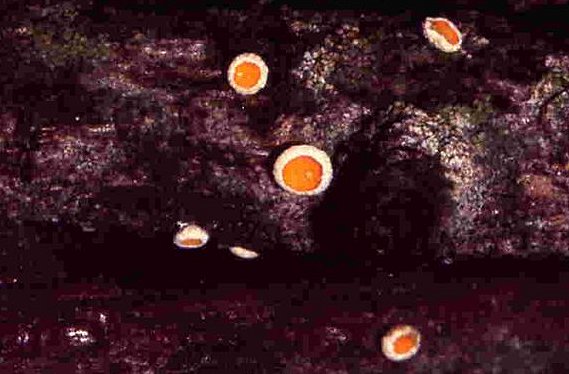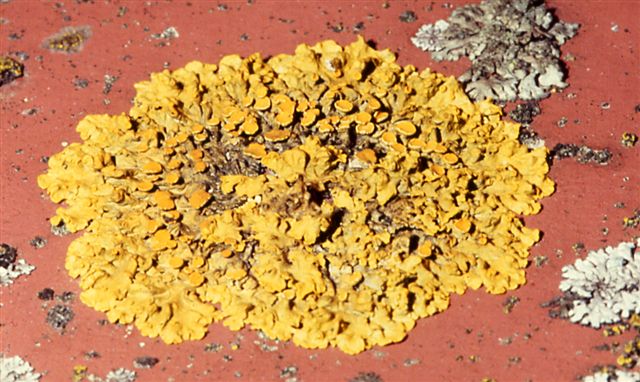
Fig.1: Lachnellula growing on larch twigs
Back to the Annual Report Contents and Home page
OPAL, which seems to be an acronym for Open Air Laboratories is, so far as I understand it, a community based science project supported by the Big Lottery Fund. One of the first projects to be undertaken is the Soil Quality project based on earthwork activity. Following that will be a project on air quality based on lichen identification but only using a small number of specific air quality indicators which can be easily identified.
My role is to enable a young graduate from York University accompanied by two or three other PhD students to be able to correctly identify a number of key species so that they in turn can pass that abilty to young volunteers taking part in the project.
On a somewhat different aspect, Dr. Barbara Hilton, chairman of the Education and Promotion committee of the British Lichen Society, has urged me to make the results of the 1500 or so churchyard lichen surveys I hold, which cover 24 Vice Counties from N. Lincs to S. Scotland, available to the Wildlife Trusts concerned and has emailed them to that effect. I always knew that someone would find them useful!
Lichens are only fungi with a very specialised life style. There can’t be many naturalists who don’t immediately connect fungi with toadstools and mushrooms, though they are only the fruit of the fungal fruit tree – the branches and roots are underground. Estimates of the numbers of fungi species worldwide is very fluid but figures suggest 0.5 to 1.5 million, based on the average ratio of 1:7::vascular plants:fungi. About 20% of all fungi are lichenised, which means that the fungus co-exists with an alga, whose single cells lie just below the surface (cortex) of the lichen. The fungi which can produce lichens almost all belong to the Ascomycota, whose members are the microfungi. Their fruits are only around 1mm diameter and totally overlooked by the general public. Fig.1 shows the fruits of Lachnellula, a microfungus which I photographed on larch twigs piled at the foot of a tree in Dalby Forest.

Fig.1: Lachnellula growing on larch twigs
The spores from a lichen are purely fungal in nature. When one lands on a suitable substrate, invisible threads (hyphae) snake out in an attempt to make contact with an algal cell. Once that happens, the lichen can grow from a minute speck to the size we can see in churchyards and on trees. The fungus enables (prompts?) the algal cells to multiply as the lichen grows. Special chemicals are produced near some of the algal cells which weaken the cell walls and enable the fungus to utilise some of the algal growth substances (e.g. thiamine etc). It can also then satisfy its own energy needs for growth from the sugars and polyalcohols which the algae, being green plants, produce by photosynthesis. It all amounts to forced labour under prison conditions! But intriguing.
Fig.2 is a photo of the lichen Xanthoria parietina growing on my garage roof. One proof of the connection between microfungi and lichens is evident when you compare the colour and form of the fruits shown in the two photos.

Fig.2: Xanthoria parietina growing on a roof
Back to the Annual Report Contents and Home page